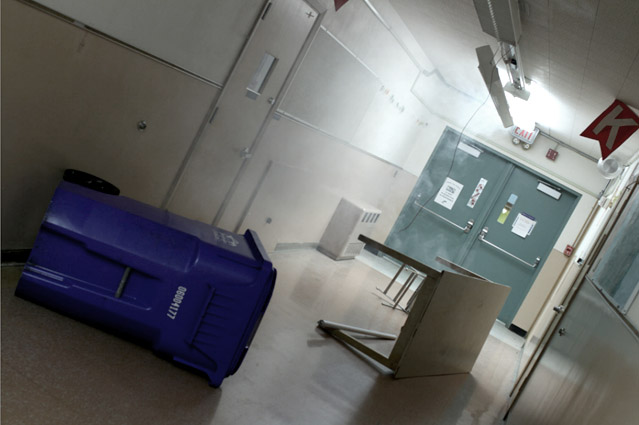 Source: Photo by Rachel Wilson, Safe Havens International Video©2012.
Source: Photo by Rachel Wilson, Safe Havens International Video©2012.
How campus employees will perform under extreme stress and time pressure in various physical settings and situations will depend on a variety of factors, including the depth and breadth of simulations requiring them to make decisions on an individual basis.
In his extensive research of fire commanders, emergency medical personnel, military personnel, and others who must routinely make life and death decisions, Gary Klein1 documented that people need a solid and broad base of experience to prepare them to make correct decisions on a regular basis. Klein’s research implies that the broader the base of experience people have, the higher the chance of making appropriate decisions under stress they can have. His research, as well as the work of others in the field, demonstrates that the over-emphasis on one category of event approach utilized by many organizations in the development of their emergency preparedness measures is fatally flawed because it does not match the way human beings make decisions under crisis situations.
There is often a dangerous over-emphasis on what the response should be if there is an active shooter situation on a campus. Emergency preparedness plan content, training sessions, as well as drills and exercises often focus more on this one type of event than other equally dangerous types of campus crisis situations that occur with at least as much, if not greater, frequency, such as tornados and fires. An over-emphasis on one type of event can deny campus employees the opportunity to improve their ability to think and act when lives are at stake in different situations. The frequently out of balance emphasis on active shooter situations is perhaps the most prevalent example of just how easy it can be to work tirelessly on emergency plans while inadvertently creating deadly gaps in emergency preparedness for the organization. There have been several instances of emergency plan failure in crisis situations involving campus shootings, even when they have been the type of event mostly emphasized in preparedness measures.
To prepare staff and students to be more likely to make correct life and death decisions, a greater emphasis on the all-hazards approach is needed. Focusing more than 10 to 15% of our energies on one type of scenario, such as acts of violence, will not help employees fully develop their base of experience for crisis situations as much as a more balanced approach does. Understanding how important a wide base of experience in life and death decision making can significantly influence how campus employees are trained and empowered. This aspect of emergency preparedness should also significantly impact the types and frequency of drills and exercises. Focusing too much on gunman on campus can result in needless losses, even if that is the type of event we are someday faced with.